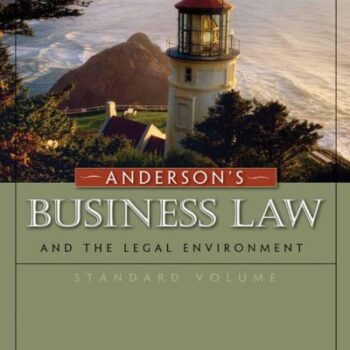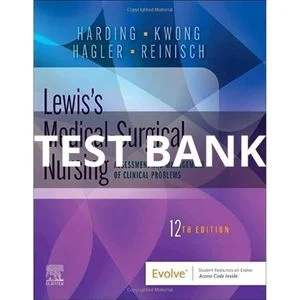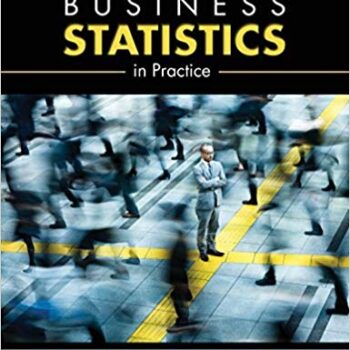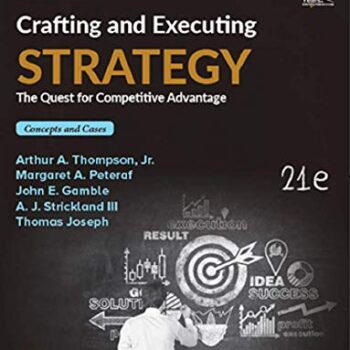
Test Bank For Advanced Financial Accounting Canadian 7th Edition By Beechy
Original price was: $55.00.$33.00Current price is: $33.00.
Digital item No Waiting Time Instant Download
The 7th Edition Advanced Financial Accounting Canadian test bank by Thomas H. Beechy, along with co-authors V. Umashanker Trivedi and Kenneth E. MacAulay is one of the must-have materials for students who are learning about various complex accounting topics. The materials in this test bank are carefully structured considering higher level concepts in preparation for financial assets, business combinations, foreign currencies transactions, and even state financial reports. Intended for mastering Canadian financial accounting concepts, it is useful in helping students gain a deeper understanding of the relevant issues and get them ready for their assessments.
Core Topics and Structure
The test bank spills over into the chapters’ sections in the 7th Canadian edition of the textbook with some of them being for example:
- Intercorporate Equity Investments: Deals with the ownership of shares and the alteration of business combinations.
- Wholly Owned and Non-Wholly Owned Subsidiaries: Walks through consolidating techniques and reporting concerning the subsidiaries.
- Foreign Currency and Financial Reporting: Discusses aspects of the currency translation and its hedging methods in international reporting.
- Public Sector and Not-for-Profit Accounting: Concerns expenses and reporting for the government and the noncommercial sector.
Advantages of this Test Bank
Accessing such books is therefore extremely beneficial for the students as they use them to understand difficult accounting concepts and topics. With the test bank students also benefit from a wide array of complex problems that resemble the ones tested during examinations. Most of these questions are useful in enhancing confidence, as well as improving retention by availing theory- more such as case studies and real-life situations that need application.
Key Features
- Comprehensive Answers: Every question is accompanied by a comprehensive answer that explains the logic and reasoning to the students.
- Different Question Types: from multiple choice questions to case-based questions all are encompassed in the test bank providing full practice for every exam format.
- Canadian Standards changes are included: This includes inclusion, reporting, and measurement of IFRS and Canadian GAAP which are critical in Canada’s Financial Practices.
- Instructor Resources: Students practice with the test bank content in class and prepare mock exams together with the instructors.
Importance of Test Bank in the Study Module
The Advanced Financial Accounting Test Bank allows students to relate the theories that they have been taught to the practical aspects of the advanced financial accounting profession. This is because the test bank incorporates all key areas in the textbook making it possible for learners to prepare efficiently for every classroom assessment and professional exam. The result is such that students appreciate the various practical issues involved in high-level accounting practice with a focus on complex integration and reporting work.
Conclusion
In as much as the study guides for accounting such as Advanced Financial Accounting Canadian 7th Edition Test Bank by Beechy may be seen as part of the resources, it is safe to say that it is an accounting study aid that is second to none. It is quite beneficial in aiding students to prepare for the practical parts of the advanced accounting examinations that they will be involved in. So advertisers looking to use beacon ads will have an unsurpassed advantage when it comes to competing in the ultra-competitive Canadian accounting standards.
Test Bank For Advanced Financial Accounting Canadian 7th Edition By Beechy
Beechy, Trivedi, MacAulay Advanced Financial Accounting, Seventh Edition
Chapter 2 Intercorporate Equity Investments: An Introduction
1) Passive investments can be classified as fair value through profit or loss (FVTPL) or as fair value through other comprehensive income (FVTOCI). Which of the following statements is true?
A) Under both FVTPL and FVTOCI, changes in the fair value of the investment are reported as other comprehensive income on the statement of comprehensive income.
B) Under both FVTPL and FVTOCI, changes in the fair value of the investment are reported una der the net income section on the statement of comprehensive income.
C) Under both FVTPL and FVTOCdividends received from the investee are reported under the net income section on the statement of comprehensive income.
D) Under both FVTPL and FVTOCI, dividends received from the investee are reported as other comprehensive income on the statement of comprehensive income.
Answer: C
Page Ref: 28
Learning Obj.: 2.2
Difficulty: Moderate
2) Rudd Ltd. has a passive investment in Burke Ltd. Rudd has elected to treat Burke as a fair value through other comprehensive income (FVTOCI) investment under IFRS 9 Financial Instruments. Which of the following statements is true?
A) Dividends from Burke are reported as other comprehensive income in Rudd’s statement of comprehensive income (SCI).
B) Dividends from Burke are reported as a line item on Rudd’s statement of financial position.
C) Year-to-year changes in the fair value of the investment in Burke are reported as net income in Rudd’s SCI.
D) Accumulated gains and losses in the fair value of investment in Burke should be reported as a separate component in Rudd’s shareholders’ equity on the statement of financial position.
Answer: D
Page Ref: 28
Learning Obj.: 2.2
Difficulty: Moderate
3) Townsend Ltd. has the following shareholders:
Palermo Co.—60%
Nix Ltd.—30%
Riley Ltd.—10%
Nix does not conduct any business with Townsend; nor has it been able to secure a seat on the board of directors. Which of the following statements is true?
A) Nix has significant influence over Townsend.
B) Nix should consider Townsend to be a special purpose entity.
C) Nix should consider Townsend to be an associated company.
D) Nix should treat Townsend as a non-strategic investment.
Answer: D
Page Ref: 30-32, 35
Learning Obj.: 2.1
Difficulty: Moderate
4) O’Reilly Ltd. incorporated O’Reilly R&D Co. to conduct research and development activities. O’Reilly R&D is a(n) ________.
A) associated company
B) joint venture
C) structured entity
D) passive investment
Answer: C
Page Ref: 32-33
Learning Obj.: 2.1
Difficulty: Easy
5) What is securitization?
A) It is the process of issuing long-term debt for financing.
B) It is the process of issuing preferred and common shares for financing.
C) It is the process of transferring long-term liabilities to a structured entity.
D) It is the process of transferring receivables to a structured entity and issuing securities to finance those receivables.
Answer: D
Page Ref: 33
Learning Obj.: 2.2
Difficulty: Easy
6) In Canada, what entities must be included in consolidated financial statements?
A) Subsidiaries only
B) All subsidiaries, except for ones in unrelated industries
C) All domestic subsidiaries
D) All subsidiaries and structured entities
Answer: D
Page Ref: 33-34
Learning Obj.: 2.2
Difficulty: Moderate
7) Bela Ltd. has invested in several domestic manufacturing corporations. Which of the following investments would most likely be accounted for under the equity method on Bela’s financial statements?
A) A holding of 15,000 of the 50,000 outstanding common shares of Earthwise Co.
B) A holding of 3,000 of the 10,000 outstanding preferred shares of Earthbent Co.
C) A holding of 5,000 of the 60,000 outstanding common shares of Earth-Kind Co.
D) A holding of 20,000 of the 25,000 outstanding common shares of Earth-Clean Co.
Answer: A
Page Ref: 35-36
Learning Obj.: 2.1
Difficulty: Easy
8) On January 1, 20X1, Best Décor Ltd. started Chic Styles Ltd. by contributing $500,000 and received 100% of the common shares of Chic Styles. Chic Styles reported net income of $50,000 in 20X1 and $75,000 in 20X2 and paid out 40% of its net income as dividends in each year. Under the equity method, what amount should be reported as Investment in Chic Styles and Investment Income on Best Décor’s separate entity 20X2 financial statements?
A)
|
Investment in Chic Styles |
Investment Income |
|
$500,000 |
$30,000 |
B)
|
Investment in Chic Styles |
Investment Income |
|
$575,000 |
$75,000 |
C)
|
Investment in Chic Styles |
Investment Income |
|
$625,000 |
$30,000 |
D)
|
Investment in Chic Styles |
Investment Income |
|
$625,000 |
$75,000 |
Answer: B
Page Ref: 36
Learning Obj.: 2.2
Difficulty: Moderate
9) Townsend Ltd. has the following shareholders:
Palermo Co.—60%
Nix Ltd.—30%
Riley Ltd.—10%
Nix has two seats on Townsend’s five-person board of directors. Which of the following statements is true?
A) Nix has significant influence over Townsend.
B) Nix has control over Townsend.
C) Townsend is a special purpose entity to Nix.
D) Nix should treat Townsend as a passive investment.
Answer: A
Page Ref: 35
Learning Obj.: 2.1
Difficulty: Moderate






